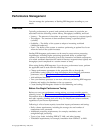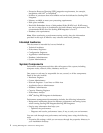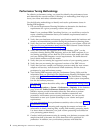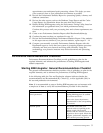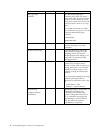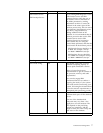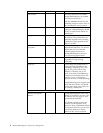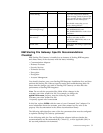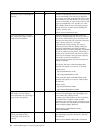
Performance Management
You can manage the performance of Sterling B2B Integrator according to your
needs.
Overview
Typically, performance in general, and optimal performance in particular, are
associated with the following criteria: latency, throughput, scalability, and load.
v Latency – The amount of time taken to generate a response to a request (speed).
v Throughput – The amount of data transferred during a specified period
(volume).
v Scalability – The ability of the system to adapt to increasing workload
(additional hardware).
v Load – The ability of the system to continue performing at optimal level even
when the load on the system increases.
Sterling B2B Integrator performance can be tuned to meet various processing
requirements, including higher processing speed and ability to sustain high
volumes. The amount of resources given to the interactive and batch components
of a mixed workload determines the trade-off between responsiveness (speed) and
throughput (work completed in a certain amount of time).
When using Sterling B2B Integrator, if you face any performance issues, perform
the applicable task or tasks from the following list:
v Change performance parameters in the properties files or through the
performance tuning utility. For more information about changing performance
parameters, refer to “Performance Tuning Utility” on page 120.
v Add additional hardware.
v Tune your business processes to run more efficiently on Sterling B2B Integrator.
v Monitor and archive the database to free up resources.
v Create Sterling B2B Integrator cluster for load balancing and scaling.
Before You Begin Performance Tuning
Before you carry out performance tuning actions, you must consider capacity
planning issues. The “Performance and Tuning Worksheet” on page 241 provides
information about how to determine your capacity requirements. This worksheet,
and other capacity planning tools, also help you adjust your current workload,
regardless of your future requirements.
Following is a list of some capacity issues that impact performance and tuning:
v Daily volume requirements, including the average size and number of
transactions to be processed.
v Additional processing requirements, for example, translation, and
straight-through processing.
v Types of pay loads, including EDIFACT, XML, and other formats.
v Translation requirements, for example, translation from EDIFACT to XML.
© Copyright IBM Corp. 2000, 2015 1









